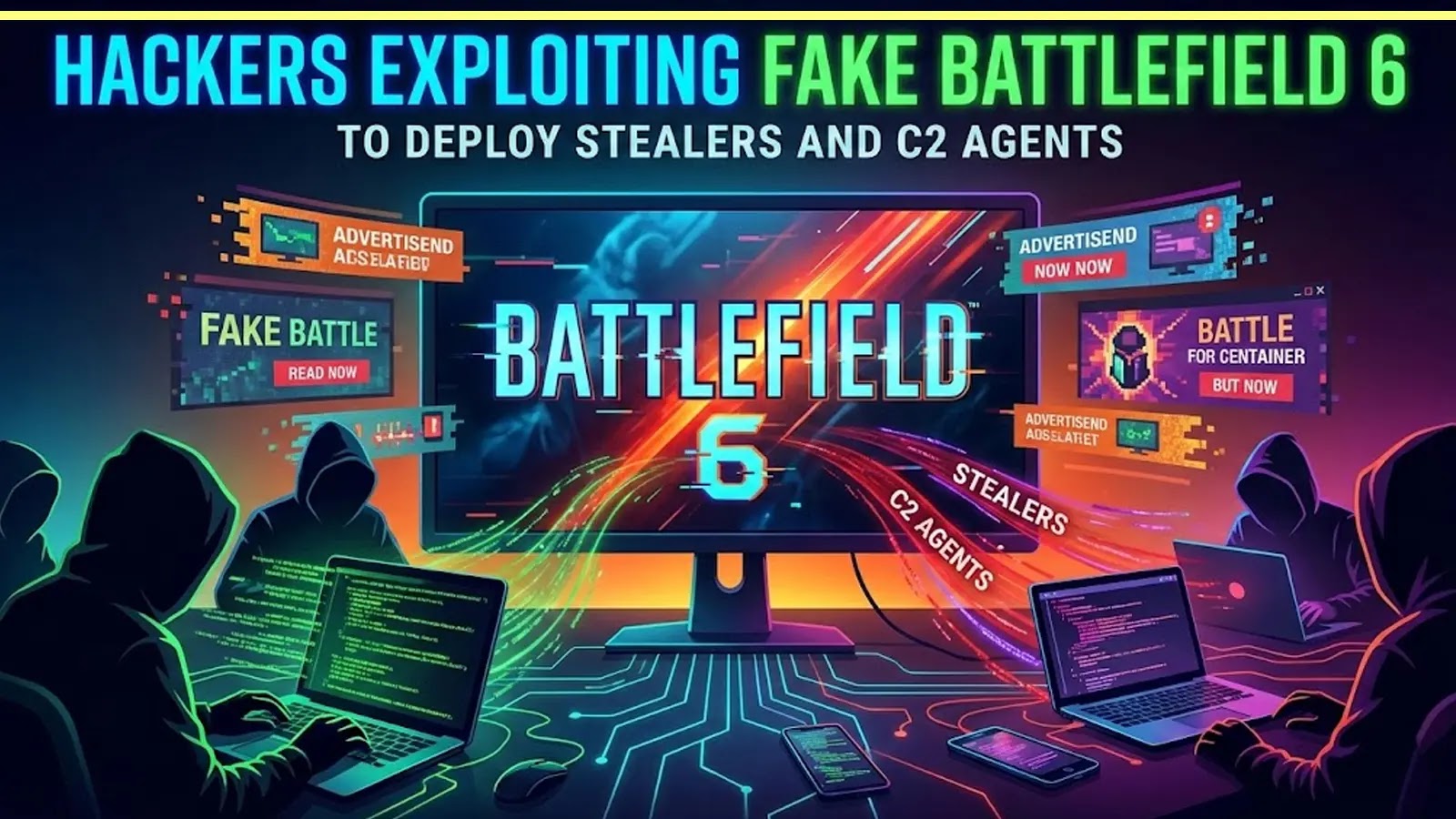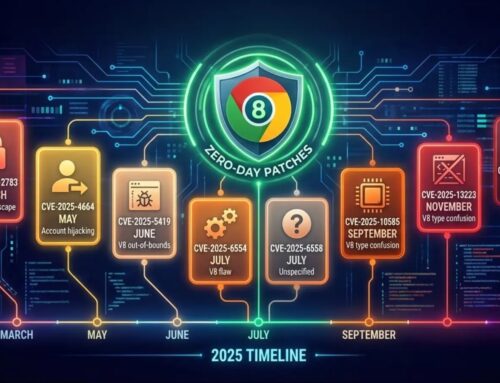
Hackers Exploiting Fake Battlefield 6 Popularity to Deploy Stealers and C2 Agents
The digital battlefield extends far beyond the virtual arenas of popular video games. As millions eagerly awaited the release of Battlefield 6, a dark undercurrent of cybercrime began to exploit this anticipation. Threat actors, masters of deception, have leveraged the immense popularity of this highly anticipated title to deploy sophisticated stealers and command-and-control (C2) agents, ensnaring unsuspecting gamers in a web of malware.
The Lure of the “Cracked” Game: A Digital Trojan Horse
The allure of free or early access to a major game title like Battlefield 6 is a powerful motivator for many. Cybercriminals capitalize on this desire by creating and distributing what appear to be “cracked” versions of the game or fraudulent game trainers. These malicious payloads are typically disseminated across high-traffic platforms such as torrent websites and underground forums, places where gamers often seek modified content or unofficial releases. The unsuspecting downloaders, believing they’re getting a free ride into the game, are instead installing dangerous malware.
Stealers and C2 Agents: The Tools of Digital Theft
The primary forms of malware identified in these campaigns are information stealers and C2 agents. Information stealers, as their name suggests, are designed to illicitly collect sensitive data from a victim’s system. This can include login credentials for various online services, financial details, system information, and personal files. This stolen data can then be used for identity theft, financial fraud, or sold on dark web marketplaces.
Command-and-control (C2) agents, on the other hand, provide attackers with persistent remote access to the compromised system. This allows them to execute further malicious commands, exfiltrate more data, introduce additional malware, or even incorporate the affected machine into a botnet for launching distributed denial-of-service (DDoS) attacks or other nefarious activities. The establishment of a C2 channel grants adversaries a long-term foothold within the victim’s environment, posing a significant and ongoing security risk.
Exploitation of Popularity: A Recurring Threat Vector
This exploitation of popular media, particularly video games, is a common tactic in the cybersecurity landscape. Attackers frequently latch onto trending topics, events, or releases to broaden their victim pool. The high volume of searches and discussions surrounding titles like Battlefield 6 creates a fertile ground for social engineering tactics. Users, eager to participate in the hype, may drop their guard and overlook telltale signs of malicious activity.
Remediation Actions: Fortifying Your Digital Defenses
Protecting yourself from such threats requires a multi-layered approach and vigilance. Implement the following actions to bolster your security posture:
- Source Software from Official Channels: Always download games and software exclusively from official distributors, platforms (e.g., Steam, Epic Games Store, Xbox Store, PlayStation Store), or their authorized resellers. Avoid third-party websites, torrents, or unofficial forums for game downloads.
- Employ Robust Antivirus/Endpoint Detection and Response (EDR): Ensure you have reputable antivirus or EDR software installed and kept up-to-date. These tools are crucial for detecting and preventing the execution of known malware.
- Enable File Extensions: Configure your operating system to show file extensions. Malicious files often use deceptive names like “Battlefield6.exe.txt” or “Battlefield6.mp4.exe” to trick users. Showing extensions reveals the true file type.
- Exercise Caution with Executables: Be extremely wary of running executable files (.exe, .scr, .bat, .cmd) downloaded from unverified sources. Even seemingly innocuous files can be wrappers for malware.
- Regular Data Backups: Periodically back up your critical data to an external drive or cloud service. This ensures that even if your system is compromised, your valuable information remains recoverable.
- Implement Strong Passwords and Multi-Factor Authentication (MFA): Protect your online accounts with strong, unique passwords and enable MFA wherever possible. This adds an extra layer of security, making it significantly harder for attackers to access your accounts even if they steal your credentials.
- Stay Informed: Keep abreast of cybersecurity news and common attack vectors. Understanding how cybercriminals operate is the first step in defending against them.
Tools for Detection and Mitigation
| Tool Name | Purpose | Link |
|---|---|---|
| Malwarebytes | Malware detection and removal | https://www.malwarebytes.com/ |
| CrowdStrike Falcon Insight | Endpoint Detection and Response (EDR) | https://www.crowdstrike.com/ |
| VirusTotal | Online file and URL analysis for malware detection | https://www.virustotal.com/ |
| Emsisoft Anti-Malware | Comprehensive antivirus and anti-malware solution | https://www.emsisoft.com/en/ |
Conclusion: The Ongoing Battle for Digital Safety
The exploitation of popular culture, exemplified by the malicious campaigns surrounding Battlefield 6, underscores the persistent ingenuity of cybercriminals. As long as there is an eager audience and a common point of interest, attackers will find ways to weaponize that interest. For gamers and IT professionals alike, the lesson is clear: vigilance and adherence to robust security practices are paramount. Always verify your sources, secure your systems, and understand that in the quest for the latest gaming experience, the greatest risk might not be in the game itself, but in how you acquire it.





